Creating Space for Peace
By Bridget Bancroft
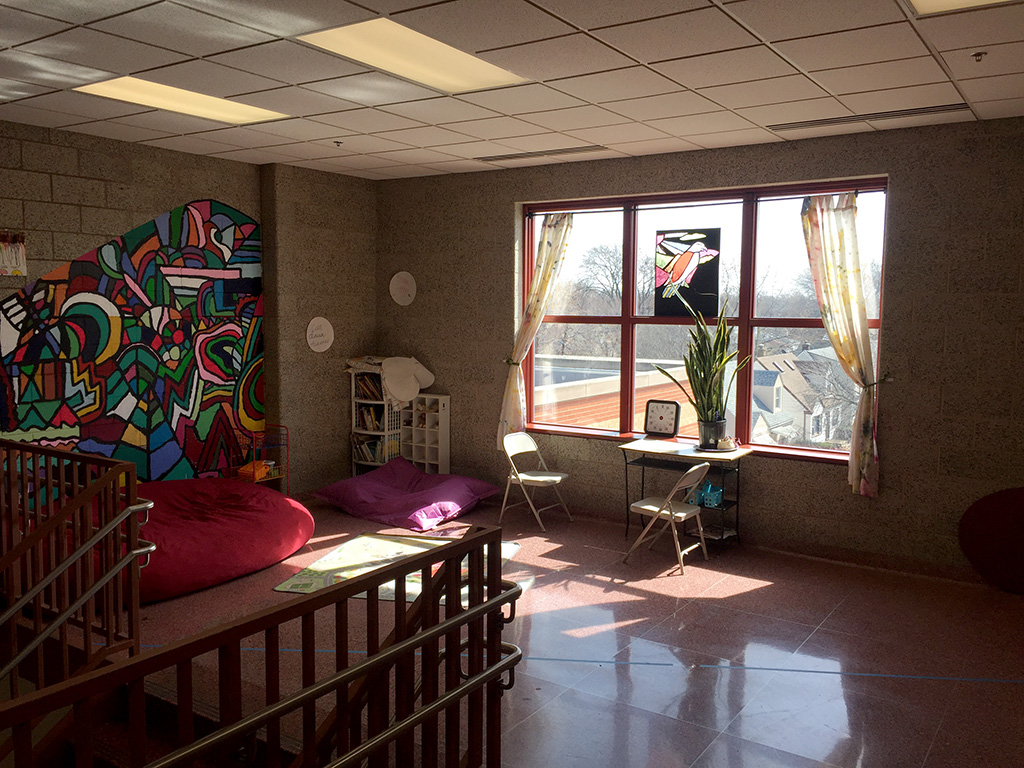
After discussing issues of space, safety, and self-regulation, students worked together to transform an existing school space into one that promotes peace within their school. They explored the ideas of several contemporary artists who use installation in their work, including Yayoi Kusama, Olafur Eliasson, and Ai Wei Wei. We discussed different ways we could transform a space within the school to help students feel peaceful. After surveying the school and choosing a space, they broke into small groups to propose projects and make our Peace Room into a reality.
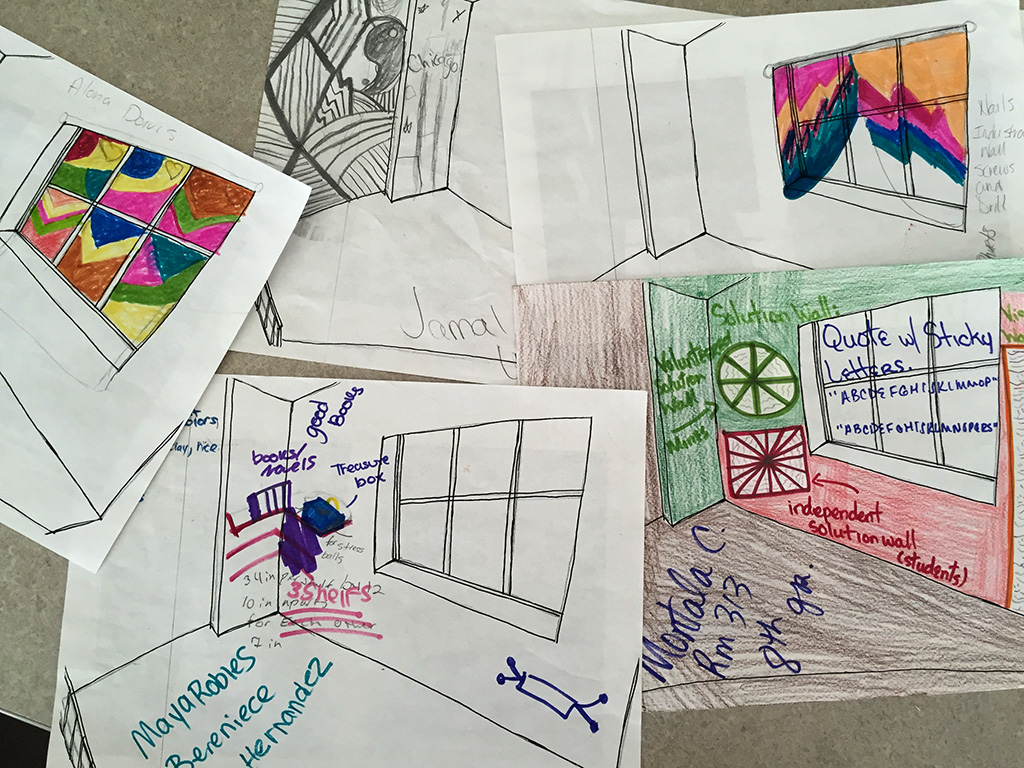
Goals and Objectives
- Students will decide as a group: What is a safe space? How can we create a space like that in our school?
- Students will reflect on the work of several contemporary installation artists to seek ideas about transforming a space within the school.
- Students will survey the whole student body about what they need in a space to feel relaxed.
- Students will be able to use research and their museum visit to propose ideas for an installation project they can create for the space.
- Students will be able to come up with a list of the necessary materials for their projects and supplies needed for the Peace Room.
- With the help of their teacher, students will write a budget and find funding opportunities for the supplies they need.
- Students will transform an actual space within the school into a Peace Room.
Guiding questions
- What is Peace?
- What is a safe space?
- What do I need to feel calm or relaxed?
- Is it possible to have a safe space within a school? Why or why not?
- Why are safe, calming spaces necessary in a school?
- Who would benefit from a space for peace within our school?
- What can we each create to make this space most effective for students?
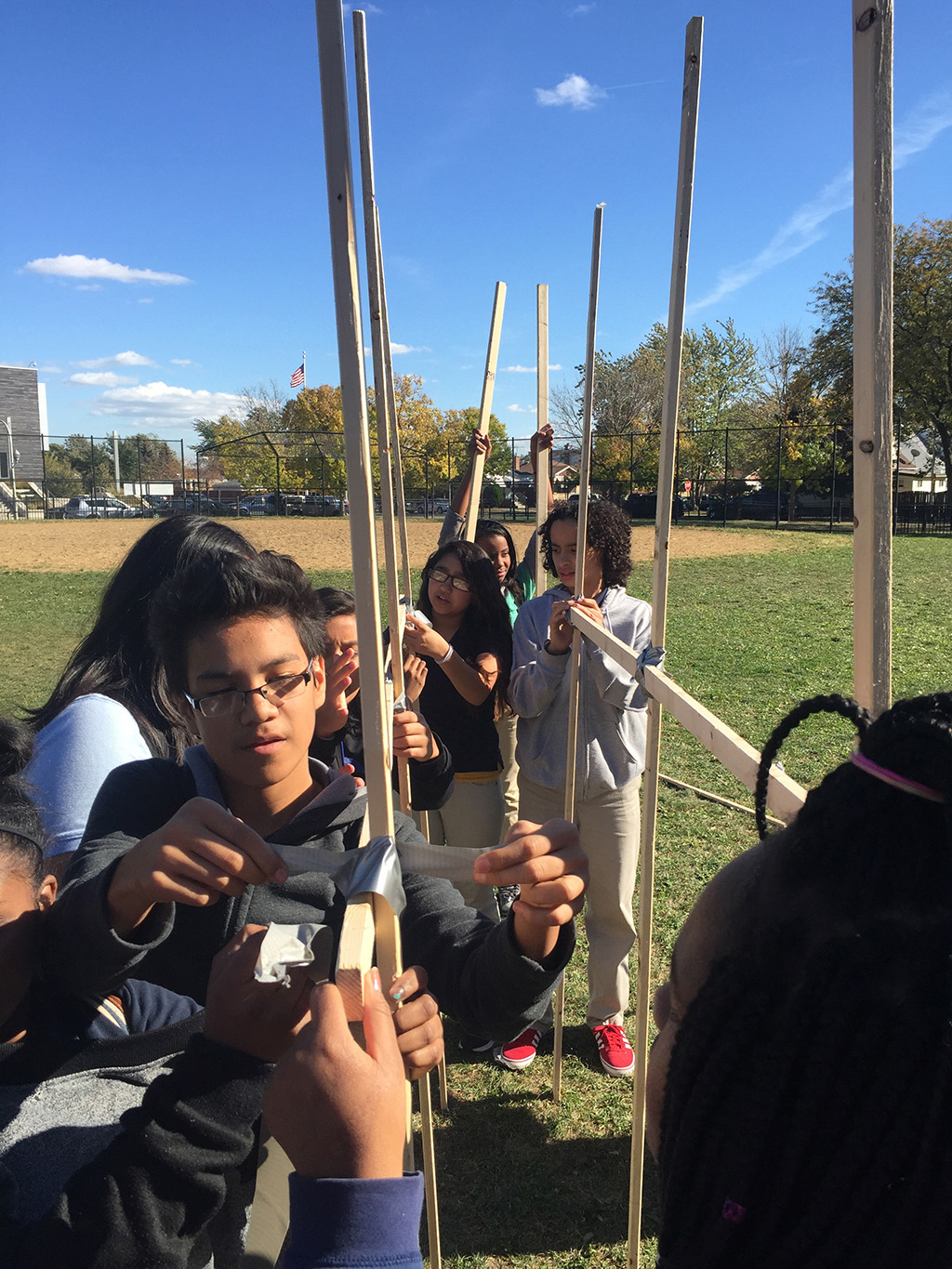
Documentation + Assessment
What did the students do to record their process?
Each day a student was designated as the photographer in order to document the process of installation, working in the classroom, and planning the projects for the Peace Room. Students then uploaded the photos to our class computer and selected the photographs that aptly documented each project for assessment.
What did the students do to reflect on/assess their process?
Students had to select photographs that showed their participation in each specific project in order to be assessed for their work. Students completed daily warm-up written responses guiding them into each work period, allowing them time to reflect on the previous class and what needed to be done during that day’s work period. Groups each completed the same planning steps, including sketches, brief presentations, and written plans for each group. Students were also graded daily according to our daily participation criteria.
Timeframe + Learning Activities
Timeframe
The entire project (planning, surveying, researching, installing, and activating the space) lasted about 20 weeks. This project timeline could be shortened or lengthened depending on available space and time.
- Each 8th grade class has art one time per week.
- The first 3 weeks were discussion, sketches, and brainstorming.
- Detailed group project proposals and supply lists were due by the 5th week.
- The first supply order was in by the 6th week, and proposed projects began.
- A Donors Choose student-led project grant was written by the students, submitted, and funded by the 9th week.
- Students began project installation by the 12th week: murals, mosaics, and other projects that need to be done within the space were completed there. Other projects continued to progress in the classroom and were installed when finished.
- By Week 20, students installed their artworks in the Peace Room.
Learning Activities
Discussions: As a class, we discussed what our motivation for a Peace Room might be. Students talked about how they feel when they are angry, and what it feels like to want to leave the classroom, but not be allowed to. Students described frustrations with teachers who wouldn’t even let them use the bathroom. We talked about the need to “cool down” sometimes, and all the fights that happen at our school, often over silly things. Students agreed that they didn’t feel trusted within their school. With no social worker or nurse available to students, it didn’t feel like there was anywhere to go talk to someone outside of class. During each group conversation, I tried to listen to each student and take notes on a large white paper in the front of the room.
Sketches: I drew up a rough sketch of the space we had at our school, and students wrote notes and drew pictures of how they wanted the Peace Room to look.
They then each created a group proposal that described in detail the project they would like to create for the Peace Room. The projects were approved, materials were collected, and students began working independently on their artworks.
Photography/Documentation: During each class, I would choose a photographer to document the students at work. This was a great way to engage students who had trouble working in groups, or students who needed redirection. It was also a good way to assess student progress.
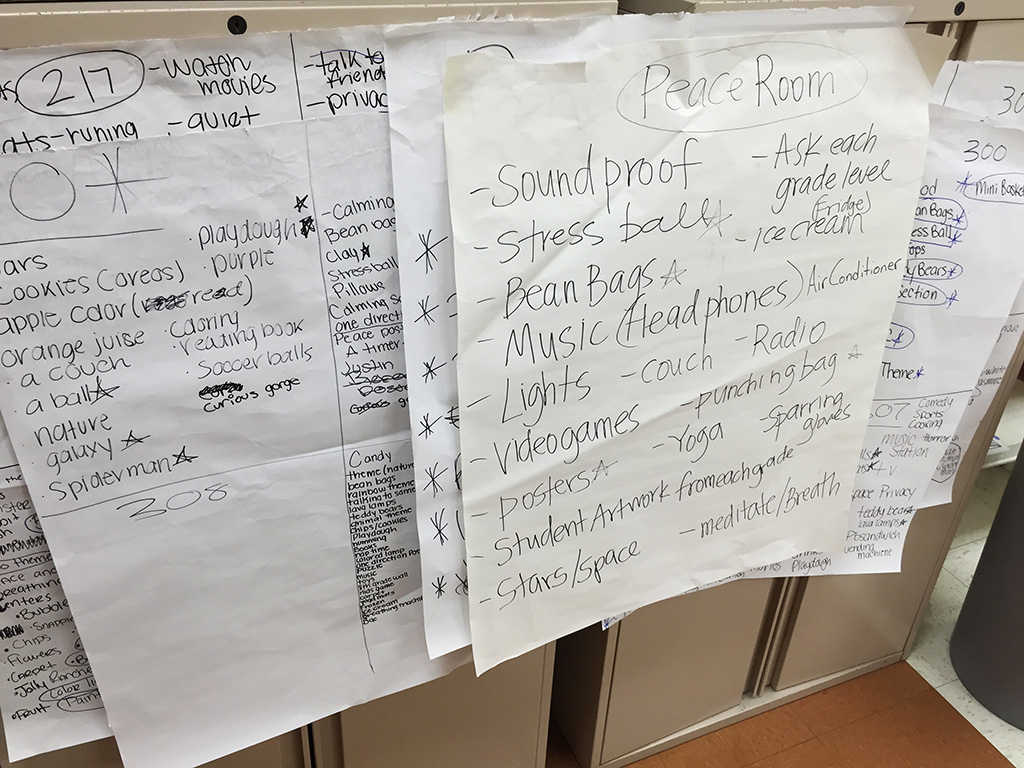
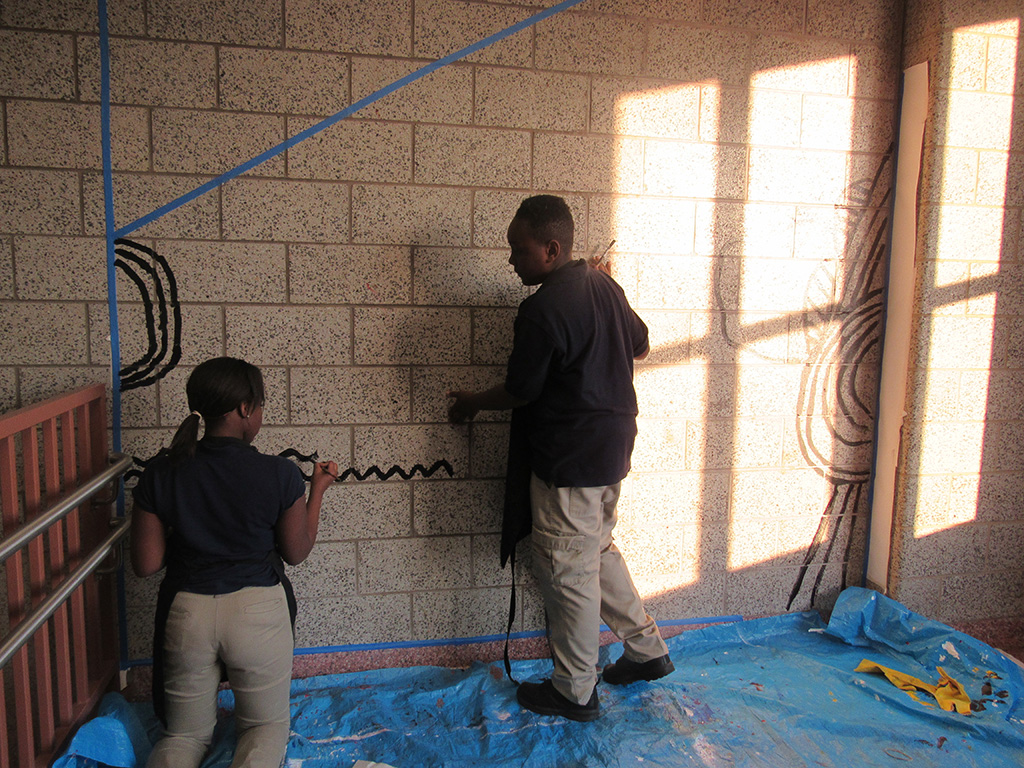
Materials
Materials will vary according to student proposals, space, and function of the space.
- Mural: Gesso, acrylic paint, drop cloths, paint brushes, buckets, small containers, and paper towels.
- Moon/Sun Sculpture: Molding paste, cardboard, x-acto knives, and paper clay.
- Mosaic: Tiles, grout, and wood cut to fit over the windowsill.
- Stained “glass”: Cardboard, projector, colorful cellophane, x-acto knives, and a computer
- Wooden Relaxation Menu: Plywood, acrylic paint, wood burner.
- Tie-dye curtains: Fabric for testing, spray bottles, RIT dye, drop cloth, white cotton curtains, and a large curtain rod.
- Small Planters: Stoneware clay, several colorful under-glazes, soil, seeds, mats, and clay tools.
- Peace Room Signage: Paper, acrylic paints, and stencils.
- Wall: Lumber measured to size, power tools, drill, hand saw, nails, screws, hammer, hinges, and corner reinforcement.
- Dividing curtain: Paper, wire, circles, lamination machine, small hooks, scissors, and a circle compass.
MCA Connections
Students were inspired by their visit to the MCA, especially The Living Room, a space created by high school students for teenagers to meet within the (sometimes daunting) space of the museum. After experiencing The Freedom Principle exhibit, we also looked at the installation work of Yayoi Kusama, Olafur Eliasson, and Ai Wei Wei. This led to many conversations about what artists can do to transform spaces.
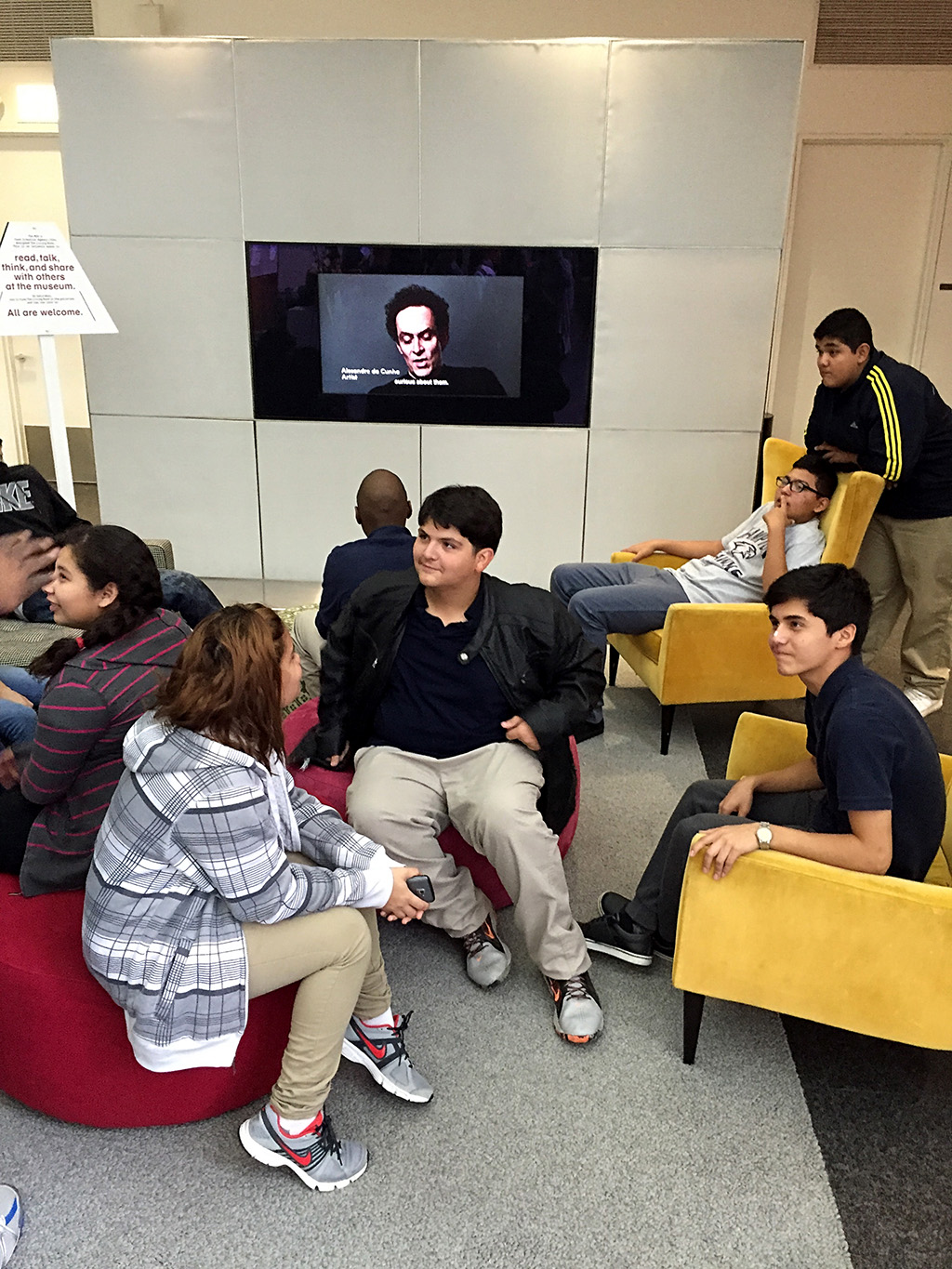
Bridget Bancroft
Lionel Hampton Elementary School
Bridget Bancroft is a Chicago-based artist, educator and activist. She believes strongly that art has an immense power to create positive social change by building community, providing more tools for expression, and reminding students that their ideas can be powerful and beautiful. After receiving her BFA and her MAT from Maryland Institute College of Art in Baltimore, she continues to learn every day in the Chicago Public Schools from the 600 amazing students she works with each week.
Bridget reflects on her process:
Collectively researching, designing, and building the Peace Room has created a real, physical space for students to go when they need peace, relaxation, or someone to talk to. 8th Grade students took leadership in the school to use every student’s input and decide democratically what they would create. Students worked together in groups and each overcame unique obstacles to make their projects work. Since I only met students once a week for a large-scale program, it was often hard for both them and me to stay focused on our goals, and students sometimes began losing faith that the project would actually ever be finished. At other times, they were so motivated by the project that they decided to use their own time to interview every classroom about what they need to feel calm and relaxed. I tried to talk to as many other teachers as possible and reach out for support. Positive moments propelled us forward, too, such as the fact that the project was funded through Donors Choose in less than 24 hours, and I got to tell my students that we were able to order everything they had asked for to realize their creative plans. We now have an amazing, thoughtful space created by students that everyone in our school knows as the Peace Room. Because of this project, our school now has the lucky challenge of figuring out how to use the Peace Room to its greatest potential, and it is already exciting to see students run their own talking circles within the space.